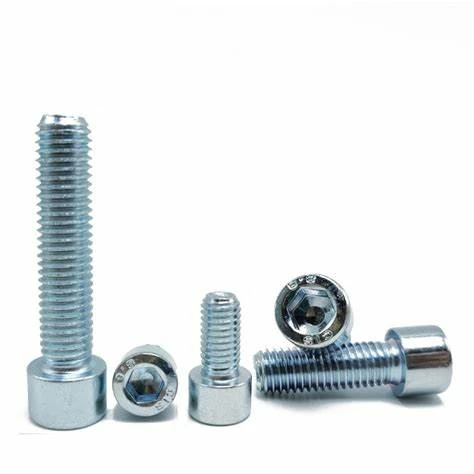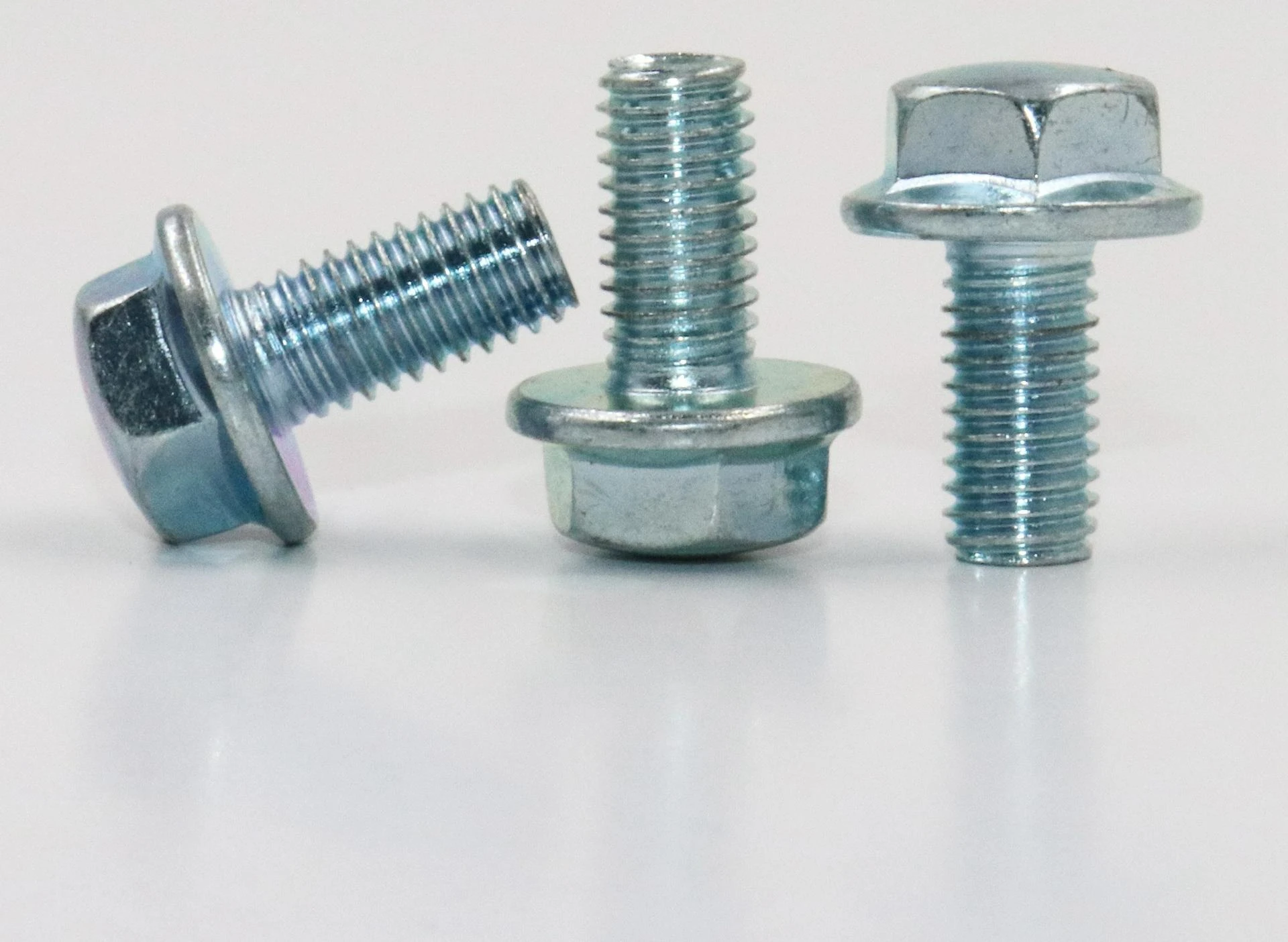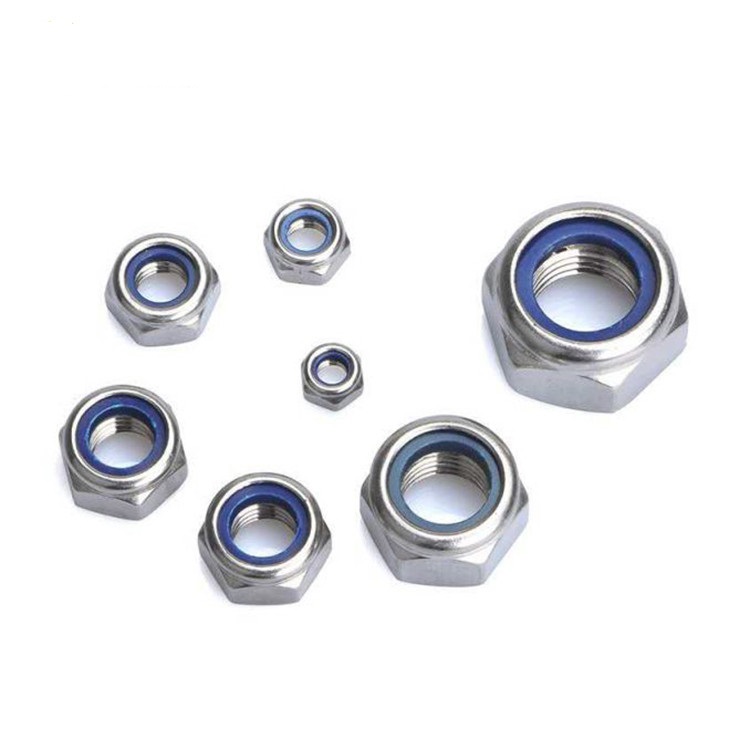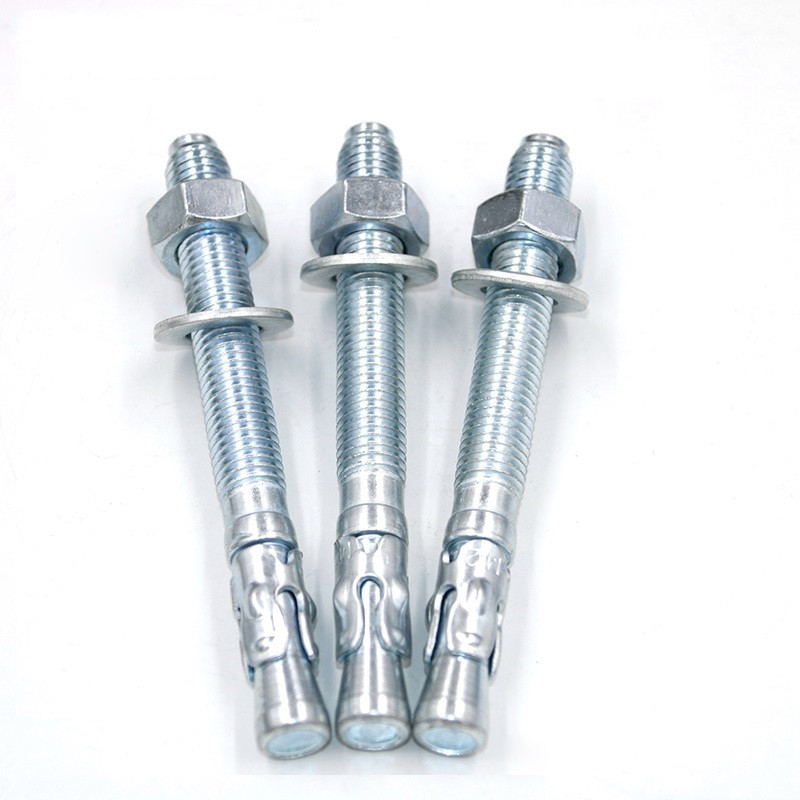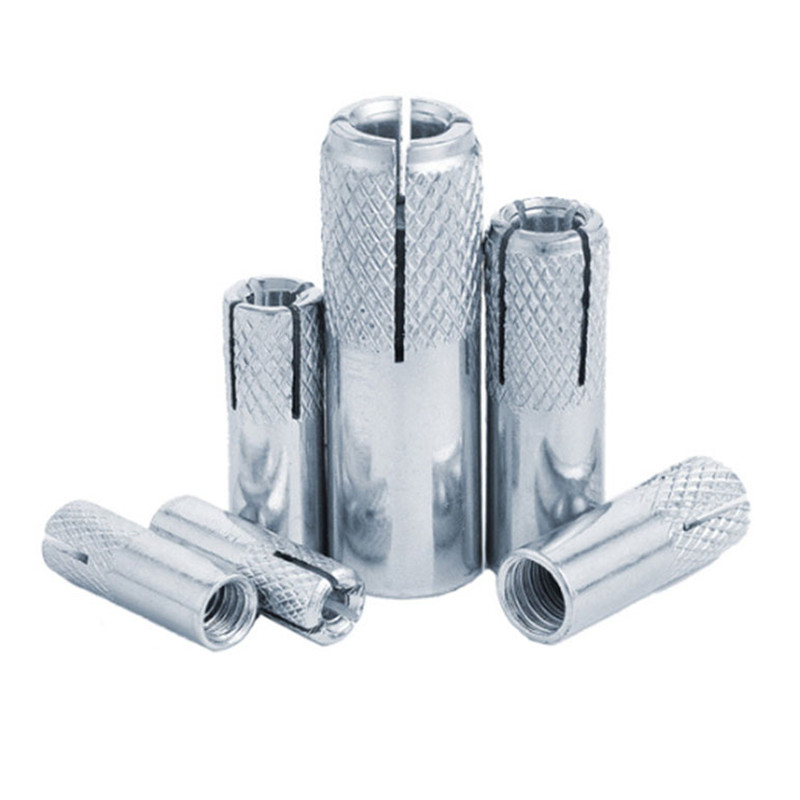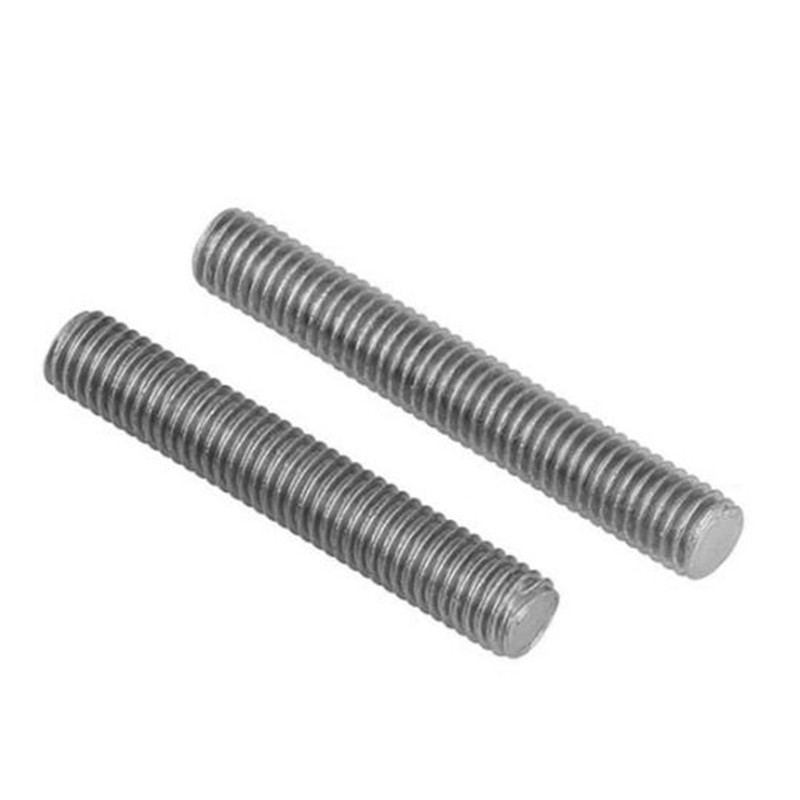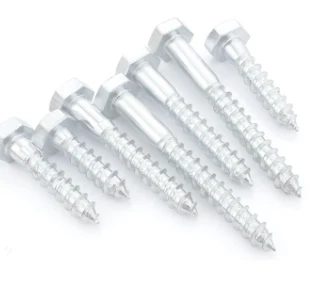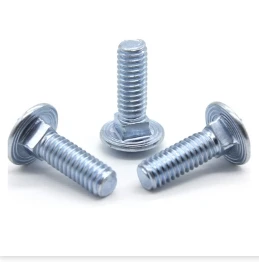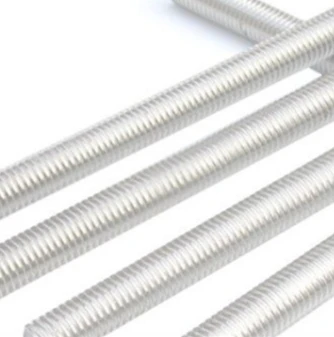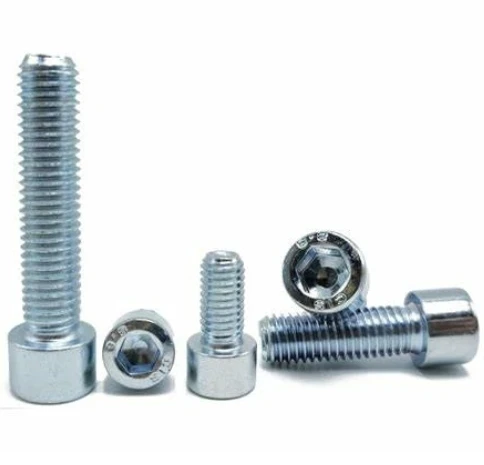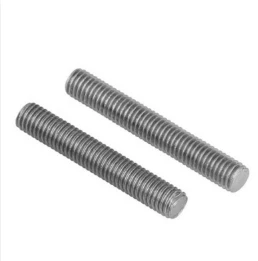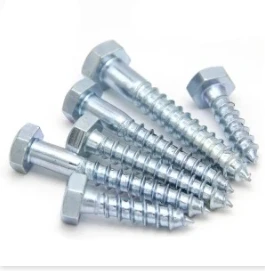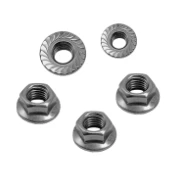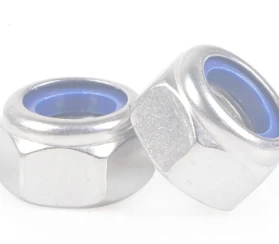Introduction to DIN 985 Nylon Insert Lock Nuts: Engineered for Security
In critical mechanical and structural applications, the reliability of fastening solutions is paramount. Vibrations, thermal expansion, and dynamic loads can all contribute to the loosening of standard nuts, leading to potential equipment failure, safety hazards, and costly downtime. This is precisely where the DIN985 lock nut emerges as an indispensable component. Designed to resist loosening under extreme conditions, this specific type of prevailing torque lock nut incorporates a non-metallic (typically nylon) insert that creates an interference fit with the mating bolt threads, ensuring a secure and stable connection.
The DIN 985 standard defines the precise dimensions, materials, and performance characteristics for these hexagonal nuts with a non-metallic insert. Renowned for their robust vibration resistance and reusability, DIN 985 nyloc nut variants are integral to industries where safety and operational continuity cannot be compromised. This article delves into the technical intricacies, manufacturing processes, application advantages, and market dynamics surrounding this crucial fastener, providing B2B decision-makers and engineers with comprehensive insights into its value proposition.
Industry Trends and Market Dynamics for Lock Nuts
The global industrial fastener market is experiencing sustained growth, driven by expansion in manufacturing, automotive, aerospace, construction, and energy sectors. Within this landscape, the demand for high-performance locking fasteners, such as the DIN985 lock nut, is particularly robust. Key trends include:
- Emphasis on Reliability and Safety: Industries are increasingly prioritizing fasteners that offer enhanced security against loosening, especially in high-vibration environments. This translates to higher adoption rates for nyloc nuts over standard nuts and washers.
- Material Innovation: While traditional steel grades remain dominant, there's a growing demand for corrosion-resistant materials (e.g., stainless steel A2/A4) and lightweight alternatives to improve performance and extend service life.
- Automation and Precision Manufacturing: The move towards higher automation in assembly lines requires fasteners with tight tolerances and consistent quality, pushing manufacturers to invest in advanced production technologies.
- Sustainability and Lifecycle Cost: Customers are increasingly considering the entire lifecycle cost, including ease of installation, reusability, and reduced maintenance, favoring solutions like the DIN 985 nut for their long-term value.
- Digitalization in Supply Chain: Traceability, quality control, and efficient inventory management are becoming critical, influencing how fasteners are sourced and distributed globally.
According to a recent report by Grand View Research, the global industrial fasteners market size was valued at USD 86.6 billion in 2022 and is projected to grow at a compound annual growth rate (CAGR) of 4.3% from 2023 to 2030, highlighting a healthy trajectory for specialized fasteners like the din985 series.
Technical Specifications and Compliance
The DIN985 lock nut is meticulously engineered to conform to the Deutsches Institut für Normung (German Institute for Standardization) DIN 985 specification. This standard outlines the critical parameters ensuring interchangeability and performance consistency across manufacturers.
Key Parameters and Materials:
- Thread Diameter: Available in a wide range of metric sizes, from M3 to M64, with common sizes including din985 m10.
- Material Grades:
- Steel: Property classes 5, 8, 10, and 12, with din985 8 being a widely used grade offering high tensile strength. Surface finishes can include zinc plating, hot-dip galvanizing, or black oxide for enhanced corrosion resistance.
- Stainless Steel: A2 (304 grade) and A4 (316 grade) offer superior corrosion resistance, crucial for marine, chemical, and food processing environments.
- Non-metallic Insert: Typically nylon (polyamide PA 6.6) for its elasticity, chemical resistance, and wide operating temperature range (-50°C to +120°C).
- Prevailing Torque: The primary locking mechanism, where the nylon insert deforms around the bolt threads, creating friction that resists loosening. This torque is measurable and must fall within specified ranges as per ISO 2320.
- Dimensions: Hexagonal head, with specific heights and wrench sizes detailed in the DIN 985 standard.
DIN 985 Product Specification Table (Example for Steel Class 8)
| Nominal Diameter (d) | Thread Pitch (P) | Height (m) max. | Width Across Flats (s) | Min. Prevailing Torque (Nm) Mating Bolt Class 8.8 | Material |
|---|---|---|---|---|---|
| M4 | 0.7 | 4.7 | 7 | 0.28 | Steel Class 8, Zinc Plated |
| M6 | 1.0 | 6.0 | 10 | 0.80 | Steel Class 8, Zinc Plated |
| M8 | 1.25 | 8.0 | 13 | 1.80 | Steel Class 8, Zinc Plated |
| M10 | 1.5 | 10.0 | 17 | 3.00 | Steel Class 8, Zinc Plated |
| M12 | 1.75 | 12.0 | 19 | 5.00 | Steel Class 8, Zinc Plated |
Note: Values are approximate and may vary slightly based on specific manufacturing tolerances and coatings. Refer to the latest DIN 985 standard for precise specifications.
Manufacturing Process Flow of DIN 985 Lock Nuts
The production of a high-quality DIN985 lock nut involves a sophisticated multi-stage process, ensuring precision, strength, and the effective integration of the nylon locking element.
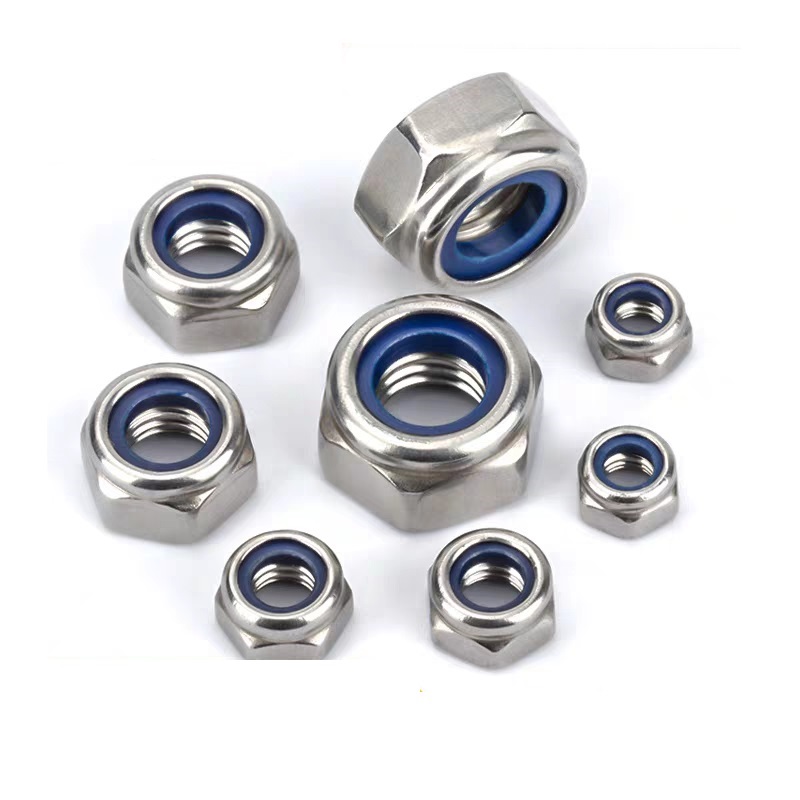
Figure 1: Illustration of a manufacturing facility for specialized fasteners.
- Material Sourcing & Preparation: High-grade steel wire rods (e.g., carbon steel, alloy steel, stainless steel A2/A4) are sourced, cut to precise lengths, and often annealed to improve ductility for subsequent forming operations.
- Cold Forming (Forging): The cut wire slugs are fed into multi-station cold heading machines. Through a series of dies and punches, the material is progressively formed into the rough hexagonal shape of the nut, including the initial bore. This process ensures high material utilization and excellent grain flow for superior strength.
- Tapping (Thread Cutting): The formed blanks proceed to tapping machines where internal threads are cut (or rolled) into the nut's bore. Precision tooling ensures thread integrity and adherence to ISO metric thread standards.
- Nylon Insert Integration: This is a critical step unique to nyloc nuts. A high-speed automatic machine inserts the pre-formed nylon ring (typically polyamide 6.6) into the recessed collar at the top of the nut. The process ensures a secure, interference fit of the nylon insert within the metal body.
- Heat Treatment (for Steel Grades): For steel din985 lock nuts (e.g., property class 8 or 10), heat treatment (quenching and tempering) is performed to achieve the desired mechanical properties like tensile strength and hardness. This is carefully controlled to avoid affecting the nylon insert.
- Surface Treatment: Depending on application requirements, nuts undergo surface finishing processes such as:
- Zinc Plating: Most common, offering basic corrosion resistance.
- Hot-Dip Galvanizing: For heavy-duty outdoor applications requiring superior corrosion protection.
- Black Oxide: Provides mild corrosion resistance and a matte black finish.
- Other Coatings: Specialized coatings like Dacromet or Geomet for enhanced performance.
- Quality Control & Testing: Throughout the process, strict quality control measures are applied.
- Dimensional Inspection: Using gauges and optical sorting systems to ensure adherence to DIN 985 and ISO standards.
- Mechanical Testing: Proof load testing, tensile strength tests, and crucially, prevailing torque tests (as per ISO 2320) to verify locking performance.
- Vibration Testing: Junker vibration tests (DIN 65151) often conducted to validate anti-loosening capabilities in dynamic environments.
- Corrosion Resistance Testing: Salt spray tests for coated fasteners.
- Packaging & Dispatch: Finished nuts are counted, packaged, and labeled for dispatch, ensuring traceability and protection during transit.
The meticulous adherence to these steps, coupled with rigorous testing against international standards like ISO and ANSI, ensures that each DIN985 lock nut delivers consistent performance and a reliable service life.
Key Technical Advantages of DIN 985 Nylon Insert Lock Nuts
The enduring popularity and critical reliance on the DIN985 lock nut stem from its distinct technical advantages over conventional fastening methods:
- Superior Vibration Resistance: The primary benefit. The nylon insert creates a positive friction fit, preventing rotational loosening even under severe dynamic loads and vibrations that would cause standard nuts to back off. This is verified by stringent Junker vibration tests.
- Excellent Reusability: Unlike single-use locking washers or chemical threadlockers, a din 985 nyloc nut can be removed and reused multiple times. The elastic properties of the nylon insert allow it to maintain a significant portion of its prevailing torque even after several cycles, reducing replacement costs and maintenance time.
- Corrosion Resistance (Material Dependent): When manufactured from stainless steel (A2 or A4), these nuts offer exceptional resistance to corrosion, making them ideal for applications in harsh environments such as petrochemical plants, marine structures, and water treatment facilities. This advantage extends service life and reduces material degradation.
- Non-Damaging to Threads: The nylon insert provides a gentle, yet firm, grip on the bolt threads without causing damage or scoring, which can be an issue with certain metal-on-metal locking mechanisms. This preserves the integrity of both the nut and the bolt.
- Temperature Stability: While the nylon insert has temperature limits (typically up to 120°C / 250°F), within its operational range, it maintains consistent locking performance. High-temperature nylon grades are available for more demanding thermal environments.
- Ease of Installation: No special tools or additional components (like spring washers or cotter pins) are required. Installation is straightforward, using standard wrenches, contributing to faster assembly times.
- Energy Saving through Reliability: By preventing loosening and subsequent mechanical failures, these nuts contribute indirectly to energy savings by reducing the need for emergency repairs, minimizing downtime, and ensuring the continuous, efficient operation of machinery. In rotating equipment, a stable joint maintains alignment and reduces frictional losses.
These combined advantages make DIN 985 nuts a highly cost-effective and reliable choice for engineers seeking long-term joint integrity.
Typical Application Scenarios
The versatility and reliability of the DIN985 lock nut make it a preferred fastening solution across a multitude of demanding industries and application environments:
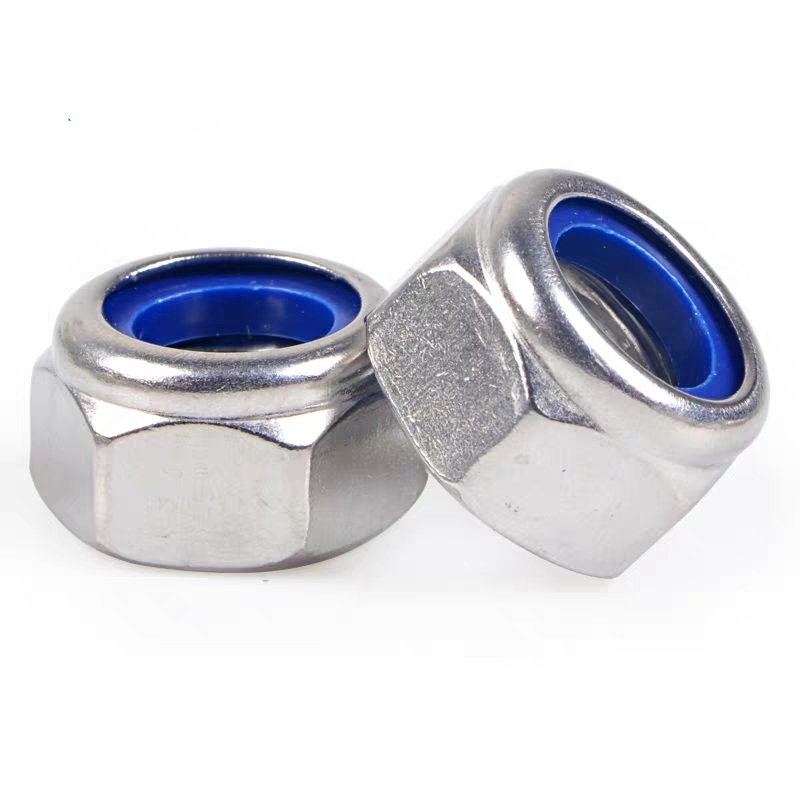
Figure 2: Industrial machinery where secure fastening is critical.
- Automotive Industry: Used extensively in engine assemblies, chassis components, suspension systems, and braking systems where constant vibrations and thermal cycles necessitate secure fasteners.
- Aerospace and Defense: Critical for securing non-flight critical components, ground support equipment, and various structural elements, leveraging their high vibration resistance.
- Petrochemical and Chemical Processing: Stainless steel DIN 985 nyloc nut variants are essential for securing flanges, pipelines, and equipment in corrosive atmospheres, ensuring leak prevention and structural integrity.
- Power Generation (Wind Turbines, Conventional Plants): Fasteners in wind turbine towers and blades, as well as components in conventional power plants, are subjected to relentless vibrations and dynamic stresses, making these lock nuts crucial for preventing catastrophic failures.
- Construction and Infrastructure: Employed in structural steel connections, heavy machinery, bridges, and railway systems where long-term stability and resistance to environmental factors are paramount.
- Marine and Offshore: Due to the availability of A4 (316) stainless steel grades, they are highly suitable for ship building, offshore platforms, and coastal installations, providing excellent salt-water corrosion resistance.
- Agricultural Machinery: Tractors, harvesters, and other farm equipment operate in harsh, vibratory conditions, benefiting significantly from the robust locking capabilities of DIN 985 nuts.
- Water Supply & Drainage Systems: Used in pump stations, valve connections, and pipe supports, especially where corrosion resistance (with stainless steel variants) is critical for system longevity and hygiene.
- Metallurgy: In steel mills and other metal processing plants, equipment is subject to extreme temperatures, heavy loads, and vibrations. DIN 985 nuts ensure the secure assembly of critical machinery.
The ability of these nuts to maintain joint integrity under diverse and challenging operational conditions underscores their indispensable role in modern engineering.
Vendor Comparison and Selection Criteria
Selecting the right supplier for DIN985 lock nut can significantly impact project success, quality, and cost-efficiency. B2B purchasers should evaluate vendors based on several critical criteria beyond just price.
Key Comparison Factors:
- Certifications and Compliance: Look for ISO 9001 certified manufacturers. Ensure products meet DIN 985, ISO 7040 (equivalent to DIN 985), and potentially other regional standards (e.g., ANSI, JIS) if applicable.
- Material Traceability: A reputable vendor will provide full material traceability reports, including mill certificates, ensuring the integrity of the raw materials used.
- Quality Control & Testing: Inquire about their in-house testing capabilities (e.g., prevailing torque, proof load, vibration testing, salt spray).
- Production Capacity & Lead Times: Assess their ability to meet your volume requirements and ensure reliable, consistent lead times, especially for large or recurring orders.
- Customization Capabilities: Can they offer specific materials, coatings, or dimensions beyond standard DIN 985 specifications if needed?
- Technical Support & Expertise: Do they have a knowledgeable team that can assist with technical queries, application advice, and problem-solving?
- Customer Feedback & Reputation: Review case studies, testimonials, and industry reputation. Partnerships with major industrial clients indicate reliability.
- Packaging & Logistics: Efficient and secure packaging is crucial to prevent damage during transit, especially for high-volume orders.
Vendor Comparison Table (Illustrative)
| Feature/Criterion | HBTBLS (Example) | Competitor A | Competitor B |
|---|---|---|---|
| ISO 9001 Certified | Yes | Yes | Yes |
| Material Traceability | Full MTRs Available | Partial MTRs | Limited |
| In-house Testing | Torque, Proof Load, Junker, Salt Spray | Torque, Proof Load | Outsourced Testing |
| Customization (Materials/Coatings) | Extensive (Special grades, finishes) | Limited (Standard coatings) | None |
| Lead Time (Standard Orders) | 2-4 Weeks | 4-6 Weeks | 6-8 Weeks |
| Years in Business | 20+ Years | 10 Years | 5 Years |
Note: This table is illustrative. Actual vendor capabilities should be verified through direct inquiry and auditing.
Customized Solutions for Specialized Needs
While the DIN 985 standard covers a broad range of applications, many industrial projects have unique requirements that necessitate customized fastening solutions. Reputable manufacturers of DIN985 lock nut often provide extensive customization capabilities to meet these specific demands.
- Material Variations: Beyond standard steel (class din985 8 and 10) and stainless steel (A2/A4), custom orders can include exotic alloys like Duplex, Super Duplex, Inconel, or Monel for extreme corrosion resistance, high temperatures, or specific strength-to-weight ratios.
- Specialized Coatings: While zinc plating is common, applications may require specific coatings such as PTFE (Teflon) for reduced friction, Xylan for enhanced corrosion and chemical resistance, or phosphate coatings for paint adhesion.
- Nylon Insert Material: For higher temperature applications, the standard nylon 6.6 insert can be replaced with specialized high-temperature polyamides or other polymer composites capable of withstanding up to 250°C.
- Custom Dimensions & Threading: While DIN 985 specifies standard metric threads (like din985 m10), some projects may require fine pitch threads, left-hand threads, or non-standard diameters to integrate with existing equipment.
- Unique Head Styles or Features: Although DIN 985 specifies hexagonal, minor modifications to head height, integrated washers, or specific marking requirements can often be accommodated.
- Specific Prevailing Torque Ranges: For highly sensitive applications, manufacturers can sometimes adjust the production process to achieve a narrower or slightly different prevailing torque range than the standard.
- Application-Specific Testing: Beyond standard ISO/DIN tests, custom solutions may involve additional application-specific destructive or non-destructive testing to validate performance under unique operational loads or environments.
Engaging with a manufacturer that possesses robust engineering capabilities and a flexible production line is crucial for clients requiring tailored fastening solutions that maintain the core benefits of the DIN 985 design while addressing unique challenges.
Real-World Application Case Studies
The practical benefits of DIN985 lock nut are best illustrated through real-world applications where they have demonstrably enhanced reliability and performance.
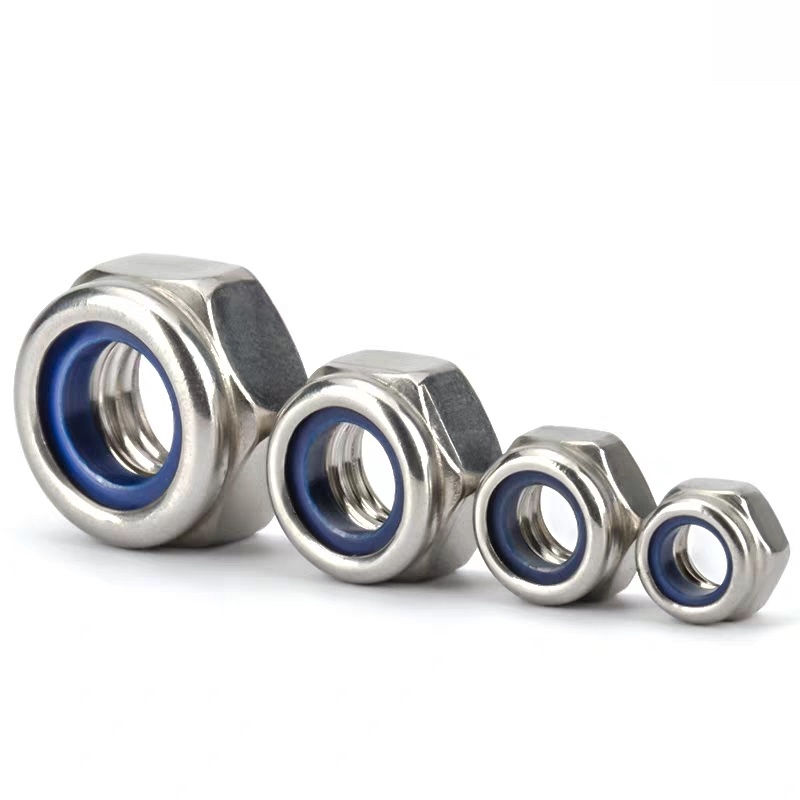
Figure 3: Complex industrial assembly requiring secure fasteners.
Case Study 1: Wind Turbine Gearbox Assembly
- Challenge: A leading wind turbine manufacturer faced recurring loosening issues with standard fasteners in critical gearbox mounts due to constant vibration and dynamic loads, leading to expensive maintenance and downtime.
- Solution: Implementation of DIN 985 class 10 nyloc nuts with specialized high-strength coatings on all critical gearbox mounting points.
- Result: After a 24-month monitoring period, the incidence of fastener loosening was reduced by over 95%. This led to a 15% reduction in unscheduled maintenance costs for the affected components and a significant increase in turbine uptime, demonstrating enhanced energy production efficiency.
Case Study 2: Offshore Oil Platform Piping System
- Challenge: An offshore energy company required fasteners for a new pipeline section on a deep-sea platform. The environment demanded extreme corrosion resistance, reliable vibration dampening from pump operations, and ease of installation in confined spaces.
- Solution: Customized DIN 985 lock nuts manufactured from Duplex stainless steel (for superior corrosion resistance in saline environments) were selected. The nyloc feature provided the necessary vibration resistance.
- Result: Over five years of operation, the Duplex DIN 985 nut connections showed no signs of corrosive degradation or loosening, outperforming previous fastening methods that required frequent inspection and replacement. The streamlined installation process also saved significant offshore labor costs.
Case Study 3: High-Speed Automated Assembly Line
- Challenge: An automotive component manufacturer experienced production slowdowns due to inconsistent fastener feeding and occasional cross-threading when using standard nuts on a high-speed automated assembly line.
- Solution: Transitioned to high-quality DIN985 lock nut with precisely manufactured threads and a consistent, chamfered entry point.
- Result: The improved dimensional consistency and lead-in of the DIN 985 nuts reduced feeding errors by 30% and virtually eliminated cross-threading incidents. This translated to a 5% increase in line efficiency and a noticeable reduction in scrap material, highlighting the economic benefits of precision fasteners.
Frequently Asked Questions (FAQ)
- Q1: What is the maximum operating temperature for a standard DIN 985 nyloc nut?
- A1: Standard DIN 985 nuts with a polyamide 6.6 insert are typically rated for continuous operating temperatures up to 120°C (250°F). Exceeding this can lead to the softening of the nylon, reducing its locking effectiveness. High-temperature variants are available for applications requiring higher thermal resistance.
- Q2: Can DIN 985 lock nuts be reused?
- A2: Yes, a key advantage of the DIN985 lock nut is its reusability. While the prevailing torque may slightly decrease after repeated cycles, they typically maintain significant locking performance for several installations. It's recommended to test the prevailing torque if reuse is critical for safety.
- Q3: What's the difference between DIN 985 and DIN 982?
- A3: Both are prevailing torque type nuts with non-metallic inserts. The primary difference lies in height: DIN 985 is a "light series" with a reduced height, whereas DIN 982 is a "standard series" with a full nut height. DIN 985 is often preferred where space or weight is a constraint, while DIN 982 offers a larger bearing surface.
- Q4: Are these nuts suitable for outdoor or corrosive environments?
- A4: Yes, when specified in appropriate materials. For outdoor or corrosive environments (e.g., marine, chemical), it is highly recommended to use DIN985 lock nut manufactured from stainless steel grades like A2 (304) or A4 (316). Standard zinc-plated steel nuts offer limited corrosion resistance.
- Q5: How do I ensure I'm getting authentic DIN 985 nuts?
- A5: Always purchase from reputable suppliers who can provide material certifications (MTRs), proof of compliance with DIN 985 and ISO standards, and maintain robust quality control processes. Be wary of unusually low prices, which can indicate substandard materials or manufacturing.
Logistics, Warranty, and After-Sales Support
A comprehensive approach to B2B procurement of DIN985 lock nut extends beyond product specifications to encompass reliable logistics, robust warranties, and responsive after-sales support.
- Lead Time and Fulfillment: We understand the critical importance of timely delivery. Standard orders for common sizes and materials typically have a lead time of 2-4 weeks, depending on quantity and current production schedules. For urgent or large-volume requirements, expedited manufacturing and shipping options are available upon consultation. Our global logistics network ensures efficient and reliable delivery to your operational sites worldwide.
- Quality Warranty: All our DIN 985 Nylon Insert Lock Nuts are backed by a comprehensive warranty covering manufacturing defects and material integrity. We guarantee that our products meet or exceed the specified DIN 985 and ISO standards, ensuring optimal performance and durability under intended use. Details of the warranty policy, including duration and claim procedures, are provided with each order.
- Customer Support & Technical Assistance: Our commitment extends well beyond the point of sale. A dedicated team of technical support specialists and engineers is available to assist with product selection, application guidance, installation best practices, and troubleshooting. We offer pre-sales consultations to ensure the optimal fastener solution is chosen for your specific needs, and post-sales support to address any operational questions or challenges. Our extensive experience spanning two decades in the fastener industry means you receive expert advice and solutions.
- Partner Clients & Certifications: We proudly serve a diverse portfolio of clients across petrochemical, metallurgy, automotive, and renewable energy sectors. Our manufacturing facilities are ISO 9001:2015 certified, affirming our dedication to consistent quality management and continuous improvement. We regularly undergo third-party audits to maintain compliance with international standards and uphold our reputation for excellence.
Choosing a supplier that combines superior product quality with reliable operational support is essential for minimizing risk and maximizing the value of your fastener investment.
Conclusion
The DIN 985 nylon insert lock nut stands as a testament to intelligent engineering in the realm of industrial fasteners. Its simple yet effective design, combining the robust strength of a hexagonal nut with the vibration-dampening capabilities of a non-metallic insert, addresses critical challenges faced in dynamic and demanding applications. From ensuring operational safety in high-vibration machinery to extending service life in corrosive environments, its advantages are clear and quantifiable.
As industries continue to evolve, prioritizing reliability, efficiency, and sustainability, the demand for high-performance fastening solutions like the DIN 985 will only grow. Partnering with a knowledgeable and quality-focused manufacturer ensures access to not just a component, but a reliable solution backed by expertise, precision manufacturing, and unwavering commitment to performance.
References
- Deutsches Institut für Normung e.V. (DIN). DIN 985: Hexagon nuts with non-metallic insert, Type 1 - Property class 8, 10, 12.
- International Organization for Standardization (ISO). ISO 2320: Fasteners — Prevailing torque steel nuts — Mechanical and performance properties.
- International Organization for Standardization (ISO). ISO 7040: Prevailing torque type hexagon nuts with non-metallic insert, style 1 — Property classes 5, 8 and 10.
- Grand View Research. Industrial Fasteners Market Size, Share & Trends Analysis Report By Product, By Application, By Region, And Segment Forecasts, 2023 – 2030.
- Junker, G. "New Criteria for Self-Loosening of Fasteners Under Vibration." SAE Technical Paper 690412, 1969.
Post time: Aug . 26, 2025 07:20


